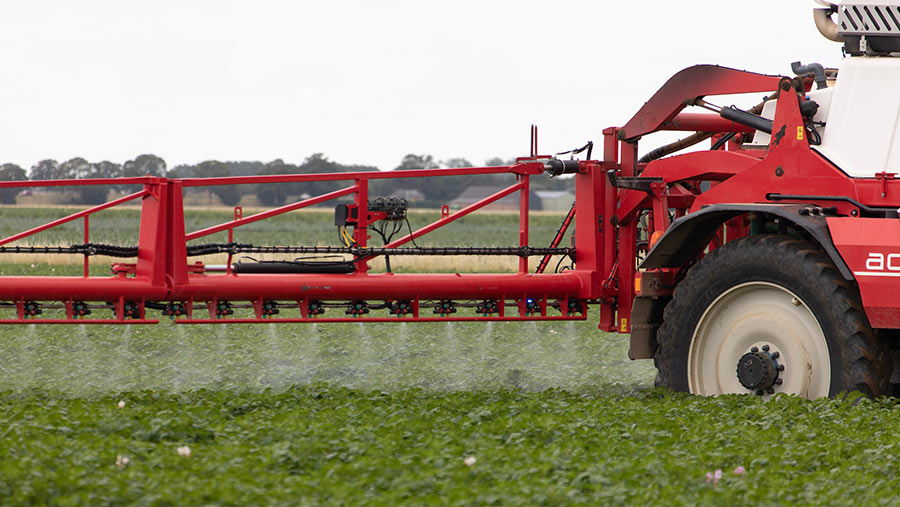How future digital tools could transform crop decision-making
 © Tim Scrivener
© Tim Scrivener There are many new digital tools and technologies in the pipeline that will aid decision-making on arable farms – some of which could see all machines truly integrated and cereal fungicide programmes move away from T-timings.
One of the most exciting is the Nevonex system being developed by Bosch – along with a combination of partners including Syngenta, Amazone, Lemken, Topcon, BASF, Corteva and Yara – which will help different machines and systems share data and information easily, says Harry Fordham, Syngenta new farming technologies lead.
See also: Maize trials show soil benefits of undersown grass mixes
“Ideally, we want data and information to go into the cloud, systems and machines to talk to each other, with recommendations going straight to the machine, and it just working,” he says.
That’s what the Nevonex system – which could be available in the UK from 2022-23 – aims to achieve. It will allow all the machines on a farm to be integrated using one control unit, and enable cloud-based app-like digital services to be used, he explains.
This means you can centralise the data from that machine, such as fuel usage, and use the data from sources such as sensing technology to assess crop health and give the best recommendation.
Syngenta apps – including the new Protector app which is due to launch in 2021 – will integrate into the Nevonex platform, as well as other services.
Protector allows farmers to map and digitally monitor their fields for pests, weeds, diseases, worm counts, beneficial insects and normalised difference vegetation index (NDVI) maps, using geo-location on the app or web-based platform.
“All these insights can be used to give sensible recommendations and create variable rate applications maps.”
Another system Syngenta is building will enable QR codes on cans to be scanned and connect directly with farm management systems, Mr Fordham says.
“This is being trialled in Germany. It talks directly to the farm management system – allowing stock records to be automatically updated – and also to the sprayer about any restrictions, such as local environmental risk assessment for pesticides (LERAP) buffer zones, telling it when and where it can’t do those things.”
In the future that could also include warnings – for example, if an operator was using a particular drift reduction nozzle that gave 75% drift reduction up to 2 bar, when the pressure gets too close to 2 bar, he adds.
Sensors that help growers precision-apply products could help reduce pesticide use in the near future, Mr Fordham says.
“At the moment, if we have a small area in a field with a particular disease, we typically spray the whole field. But what we can do now using pulse width modulation technology and accurate sensors, we can ensure the product is applied accurately and to the problem area.”
Technology could also potentially change fungicide programmes away from the typical T-timings currently used.
“If we have a system that could predict septoria with high accuracy and how long a product will last in certain situations, instead of prophylactically spraying, we can spray when we need to – that would potentially do away with the need for a T1, T2 timing.
“We can use digital tools and agronomy-driven data to drive decision-making.”

